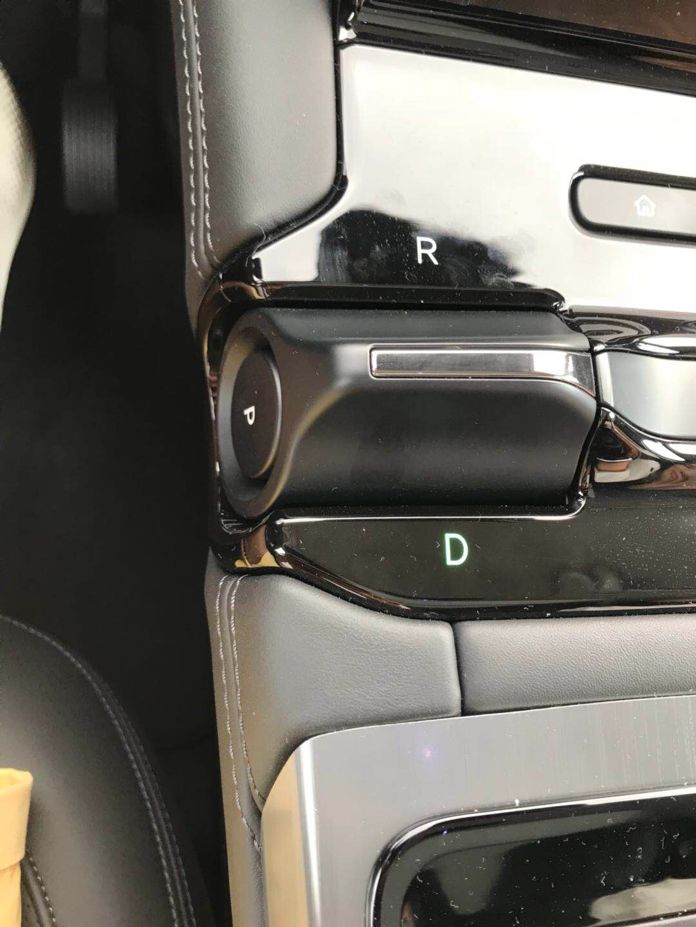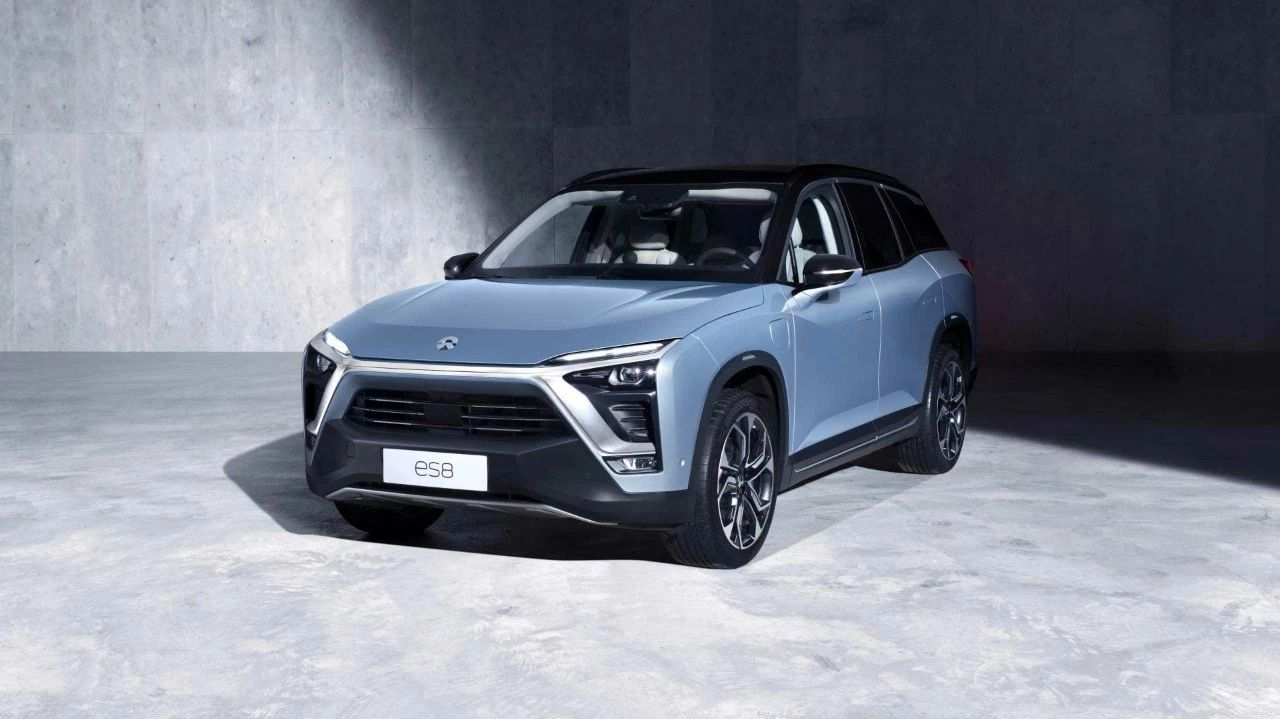Author: Zhang Xiaoliang, Founder of So.Car Automotive Data Workshop
The new wave of car-making in the Chinese market has been ongoing for at least three years. Now, the most advanced one among them, NIO, has delivered thousands of cars to the market. We have the opportunity to comprehensively review these new forces’ “transformation” of the automotive industry and the standards they have achieved through an evaluation of their real products.
To provide a clearer and more comprehensive product experience, I mainly evaluate the product experience of ES8 from four aspects. It should be noted that due to the early stage of ES8 currently delivered in the market, many functions are not yet fully developed.
New forces have many differences in product delivery compared to traditional cars. They prefer to cultivate seed users who are willing to take risks and try new things. They turn these users into early adopters of their products with brand missions and high-quality services. Of course, during the entire process, seed users do not really suffer any losses. After all, parts like air suspension, which are vulnerable and of high value, are guaranteed for life in ES8.
This is also similar to a certain form of crowdfunding: seed users provide feedback to NIO, which quickly iterates and launches more superior and reliable products to the market in a shorter time. The car I experienced was numbered as No.1294, and many details, especially the software level, were not yet perfect. Therefore, in addition to evaluating the pros and cons of current functions, I pay more attention to NIO’s potential for upgrades in the future.
The first aspect I want to evaluate is the attributes related to traditional cars, including design, driving, comfort, and perceived quality, which mainly rely on design and manufacturing capabilities accumulated in the automotive industry for centuries. For new car-making forces, although these capabilities can be bought, they still need the honing process of developing 1-2 cars. This is also evident in ES8.
As the most critical driving part of traditional concept cars, ES8 is surprising.
First of all, this is due to its front and rear 240 kW high-power motors, which allows the car’s power performance to exceed that of seven-digit fuel cars. In actual use, even when the speed exceeds 130 km/h, the acceleration performance is still excellent. Although acceleration is the natural advantage of most EV products, ES8’s power is still at a benchmark level. Of course, this also comes from NIO’s need to inherit genes from EP9, which is a requirement at the brand strategy level, although some energy efficiency will be sacrificed.
Another reason for ES8’s excellent driving performance must be attributed to its all-aluminum body.Although using aluminum at such a large proportion will bring great challenges to the subsequent manufacturing process, it performs extremely well in terms of body stiffness, which is reflected in driving characteristics of ES8. In terms of comfort, especially NVH, ES8 also performs very well, and the sound quality of the motor during acceleration and deceleration can be said to be very pleasant.
In terms of design and perceived quality, ES8 is also very good as a whole, especially the interior design and perceived quality. The design completion of this car is very high, and the entire instrument panel is fully wrapped in Nappa leather. The shape of the air conditioning vent is also well coordinated with the instrument panel. It can be seen that ES8 has devoted a lot of effort in design, material selection, and process implementation. These are all areas that other new forces in car manufacturing should learn from, and they are also necessary conditions for ES8 to enter the luxury car camp.
In addition, the shifter design of ES8 must be mentioned, which is the best operating experience and the most beautiful design among all the cars I have driven.

On the other hand, there are also many areas in which ES8 needs to be optimized for traditional car related attributes:
-
The closing process of the doors is not smooth, and a lot of effort must be used to close the doors tightly. During the 100 km test drive, I had to stop at least 6-7 times after the vehicle started and get out to close a door.
-
The opening and closing buttons of the sunroof and sunshade do not have a two-gear design, but rather a touch-style button, which means that I have to press the button with my hand while driving for about 5 seconds if I want to open the sunroof. Although NOMI can control the sunroof, it seems that NOMI can only recognize the position slightly raised. This is very inconvenient for drivers.
-
The trunk does not have an anti-pinch function, which is a flaw that should not exist. After all, the closing force of the trunk motor is very large, and if it is a child in the back, it may be fatal. Although I also asked NIO’s friend, the answer was that it has an anti-pinch function, but the force requirement is very high. However, I really couldn’t pull the trunk completely, and a fat man who experienced it with me could not do it either.### 4. Improvements on the Second Row and Controls
The process of folding down the seats and entering the third row of seats from the second row can be somewhat difficult for women due to the stiff feel of the pull rings. Furthermore, the adjustment buttons for the queen seat may require some time to master as it can be difficult to differentiate between the pedal, leg, and backrest adjustment buttons. There may also be hidden dangers with the queen seat’s sliding track in the back row, as accidentally dropping peanuts onto the track can cause it to become blocked. Of course, compared to eating peanuts, there is a greater chance of rocks getting stuck underneath the sole of shoes and causing more serious problems.
The remote control key has a unique design, but its sensitivity for some operations can be an issue. For example, opening the trunk with the key requires holding down the button for about 3 seconds, a logic that I still do not understand. Additionally, the key does not have the capability to open or close windows, which does not match the ES8’s price.
The design of the door handles is innovative, where all four handles pop out at an angle after unlocking with the remote key or shifting into park. However, this design can give people a strange feeling and is somewhat unsafe as suddenly popping out a handle after parking may catch people riding by on bikes.
Overall, despite the above mentioned issues, ES8’s performance in these traditional car-related attributes is outstanding and any improvements needed should not take a long time. This is a pleasantly surprising feature of NIO.
5. Limited Surprises in Overall Layout
As for the second aspect, I would like to evaluate the relevant attributes of new energy vehicles, especially pure electric vehicles (EVs), since EVs have many unique features compared to gasoline vehicles. For example, replacing the engine and gearbox with an electric motor can greatly increase the utilization of vehicle space, meaning that the driver’s compartment can have a larger space in a car of the same size.
Regarding the overall layout, there were limited surprises that the ES8 provided. The proportions and structure are still that of a traditional gasoline vehicle, and it does not reflect the features of an EV. Not only does it not have the iconic front trunk like Tesla, the interior space utilization is even less than that of the gasoline-powered Toyota Highlander or GAC GS8: the ES8’s body length and height are over 5.022 meters, yet the space for the third-row seat is very limited, and the trunk space is also cramped after folding down the seats.
Of course, this layout of the ES8 is largely the result of various trade-offs. For example, the lack of a front trunk is due to the queen seat, even the glove box is removed. However, as an EV, the overall layout of the ES8 is conservative, lacking the forward-looking design as NIO EVE Concept. Of course, as a start-up company’s first mass-produced car, there are reasons for being conservative.As an electric vehicle, the performance of ES8 in terms of driving has already been discussed and there is no need to dwell on it here. It should be said that it is surprising in all aspects, so much so that when I returned to my Macan, I felt somewhat uncomfortable, and felt that it was a bit heavy to drive.
As for the range, because I only drove about 20 kilometers on the highway, it is difficult to judge whether it can only travel 220 to 240 kilometers as reported on the internet. However, from the time I received the car to the end of the experience, the range only dropped from 309 kilometers to 220 kilometers, and I only drove about 75 kilometers, which is basically consistent with the odometer. During this time, I encountered various road conditions, including severe traffic jams that lasted for 50 minutes. One thing that needs to be mentioned here is that in order to improve the range, the energy recovery setting of ES8 is too sensitive. After releasing the accelerator, the speed drops very quickly.
Of course, in terms of the three critical components, we have to say that domestic EV companies rely too much on outside forces (such as CATL), which is completely different from Tesla. We see that every model of Tesla has made significant progress in terms of the three critical components. But the potential for improvement in this area by NIO may be much more limited.
#
The third aspect I want to evaluate concerns issues related to intelligence, man-machine interaction, autonomous driving, and in-car software. It should be said that this is the most clear-cut direction in the current four upgrades of cars, and it is also an area that all car companies undoubtedly need to greatly strengthen. Previously, NIO also won repeated applause in my friend circle for its very original NOMI. This time, it was my first experience of using it in an actual driving scenario.
Overall, NOMI’s design does have its extraordinary qualities: through a group of very cute emojis, NOMI changes the emotional attributes of the car, making the cold (of course, definitely with hormones) machine more friendly and a better companion.
However, in the actual experience process, on the one hand, NOMI’s performance is still not stable enough. For example, the emojis had “crashed” (all the features of NOMI were still working properly, but the emojis were gone) at one point during the drive, and the wake-up function of NOMI is not always sensitive (this is different from the experience at the Beijing Auto Show). On the other hand, NOMI’s functionality has not been fully developed yet, especially the functions related to the car. For example, NOMI’s self-introduction mentions that it can adjust the seat, but currently it does not support this feature.Currently, a really convenient aspect of NIO is that, while NOMI hasn’t been fully developed yet, it already responds very well to the industry standard aspects related to automobiles. For example, playing a specific song, telling jokes to the car owner, or helping them take a selfie inside the car, among others. At this stage, these features are enough to impress early adopters, but the next phase will require a significant upgrade to functions related to driving, such as adjusting the seats or activating low-speed following. In addition, NOMI should also integrate the vehicle manual and help files. This will truly make it a smart feature directly related to the car.
Regarding NOMI, what’s worth noting is that NIO’s understanding of the HMI might be different from that of Tesla. Tesla was the first automaker to concentrate all interactions in a touch screen, but it doesn’t comply with the Eyes Free principle. NOMI, on the other hand, is voice-controlled and therefore a more future-oriented design, even though the accuracy and intelligence of the voice recognition system still have a long way to go.
Of course, NIO’s confidence in voice commands is due to the positioning of the ES8. The majority of ES8 users are new wealthy people in high-end industries, such as the Internet or finance. Therefore, their Mandarin skills are generally exceptional. In a car priced around 200,000 yuan, voice recognition would not have enough market appeal at this stage.
Apart from NOMI, the ES8’s vehicle system also requires discussion. It’s said that the delivery of the ES8 was delayed for a month because the software development hadn’t been completed. Presently, the system is still incomplete. Throughout the entire experience, the ES8’s infotainment system is not as cool as Tesla’s, as there are noticeable differences in the smoothness of the graphics, integrated functions and user-friendliness. Perhaps a waiting period is needed for this part, as we can expect significant upgrading and optimizing in the future.
As for the other focus of intelligence, which is related to ADAS, there has been no comment from NIO because these features are not yet activated in the ES8.
In summary, as an intelligent car, the current ES8 has only a few essential features. Most of the groundbreaking features are still awaiting implementation. However, intelligence is likely to be the most fundamental content in the automotive industry over the next few decades, with one or two oligopolies possibly emerging. Just like Microsoft’s position in the PC industry. After all, developing a complete intelligent vehicle system requires a combination of extremely complex scenarios and functions.The fourth aspect I want to discuss is service capability. NIO can be said to have already set the industry standard in this regard, although the extremely high maintenance cost for a single customer in the initial stage is unsustainable. However, NIO has successfully found a brand foothold, and the potential benefits in this regard need to be considered. As for specific services, since a simple test drive is not enough to fully experience the car, no specific evaluation will be made here.
In summary, as a traditional car, ES8 has achieved the best level in China in terms of product power alone. Many aspects have also exceeded the level of luxury cars that are 1.5 to 2 times more expensive than the ES8, although many details still need continuous optimization.
As an electric vehicle, ES8 has achieved leading driving performance but has not made innovative arrangements that EVs should have, so the concept of the large seven-seater seems a bit awkward on this car.
As an intelligent car, ES8 still has a long way to go, but once NIO forms a cumulative advantage in this regard, it may become the leading car company in China. However, it is very difficult to catch up with or surpass Tesla in this regard.
Finally, as a start-up car company that is trying to get rid of the positioning of being solely a product manufacturer and to find opportunities in the positioning of user service providers, NIO’s service exceeds the standard. Of course, this is also highly related to NIO’s current development stage. However, the follow-up services cannot be solved only by investing in manpower and financial resources; many services require data and algorithms. NIO seems to have many arrangements in this regard.
The above is my experience with the ES8. Next, I want to continue to explore what the new forces in car manufacturing have changed and the future development direction of the automotive industry.
It should be said that the current automotive industry as a whole is a situation coveted by many parties: traditional car companies cannot give up the market easily, and they hold almost all existing cars and users; ride-hailing service operators such as Uber and Didi have successfully overturned the taxi industry and are seeking opportunities to continuously expand their fleets. In addition, they dream of turning all cars running on the road into their own ride-hailing cars in the era of autonomous driving; Internet companies hope to embed their data and service capabilities into the automotive market; chip manufacturers are trying to install more chips on cars; and mobile communication service providers are eager to install a SIM card on every major component of the car to generate a lot of traffic… so many cross-border opponents are staring at the deep reforms of this round of the automotive industry, which will inevitably lead to the reconstruction of the rules for a long time in the future.In such a situation, “New Energy Vehicle” (NEV) start-ups have begun to help local brands bring down more joint venture auto companies. For example, at the current auto show, almost all cars with large screens and Internet concepts are from local independent brands, and those from joint ventures are the opposite. Joint venture automakers are overly conservative in terms of intelligence, and even if they are not conservative, they cannot take advantage of data and service capabilities in the intelligent future. This point has been validated multiple times in the Internet industry: even without protection, overseas Internet companies cannot defeat local companies such as Taobao, Tencent, and Jinri Toutiao. The auto industry may very well end up the same in the next 5-10 years.
It is precisely because of the rapid development of intelligence that joint venture brand products appear to be increasingly lacking in creativity in the minds of most consumers. But conversely, the progress of traditional domestic automakers’ is not satisfactory for every companies. We have seen that the vast majority of independent brands are still lagging behind. This aspect has already been analyzed in detail in my “three tiers of division” article. Therefore, relying solely on the development of a few traditional local brands is still insufficient to meet consumers’ demand for high-quality and high-intelligence cars. Therefore, this gap will have to be filled in by NEV start-ups.
But the problem still exists. ES8 is already one of the best, but it still needs at least two complete car development processes to solve most of the detailed issues. Therefore, these NEV start-ups also need to cross many hurdles.
In summary, the future of the Chinese auto market is likely to be as follows: consumers will receive various stimuli of new concepts. On one hand, they will quickly lose interest in purchasing products lacking creativity, and on the other hand, creative and high-quality products may not be able to keep up. Of course, this means a huge market space.
Finally, I would like to share another thought with you: Who is more capable of making cars – NIO or Lynk & Co.?
My answer is as follows:Firstly, Lynk & Co was designed and developed with an annual production and sales scale of 100,000 to 200,000 units, and its BOM cost can ensure profitability at this scale. Furthermore, many details of Lynk & Co are even better than the ES8, such as the delay function of the interior lighting switch of Lynk 01/02, which is only available in luxury cars, while the ES8 has overlooked such details.
The ES8 was designed and developed with an annual production and sales scale of 10,000 to 20,000 units, and its BOM cost does not necessarily pursue single-vehicle profitability (should be strategic loss). Therefore, the material cost constraint of the ES8 is much looser than that of Lynk & Co. In this case, although the ES8 has a good perception of quality, it still has the suspicion of stacked luxury materials. Perhaps this is the gap between new carmaker’s carmaking skills and excellent traditional car companies, which requires more persistent adaptation and iteration.


This article is a translation by ChatGPT of a Chinese report from 42HOW. If you have any questions about it, please email bd@42how.com.

